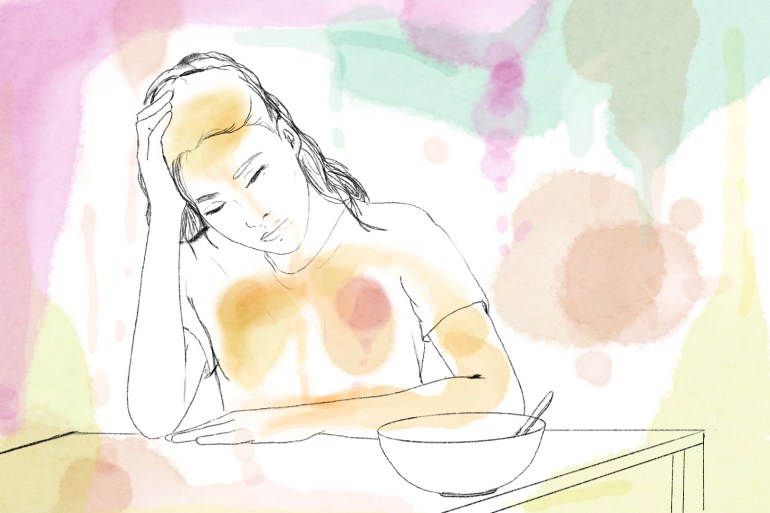When my family moved from New York City to Fort Lauderdale in the summer of 1986, we were convinced we had landed in paradise. Cold, grey winters were traded in for endless sunshine and palm trees, and the Atlantic Ocean greeted us with bath-water temperature waves, day or night. Just eight years old, and a lover of the water, I tried to squeeze in as much time as possible in South Florida’s waterways. This pastime, however, also meant exposure to strong sun and blazing temperatures, and unbeknownst to us, would change the course of my life forever.
My family and I didn’t know it then, but the sun and heat would come to be one of the main triggers of Lupus symptoms in my body. Lupus, a chronic inflammatory autoimmune disease that affects more than 5 million people worldwide, can wreak havoc on numerous body systems of patients, including the heart, lungs, kidneys, brain and skin. People diagnosed with Lupus will experience flare-ups (increased disease activity) and remissions and may notice over time that certain factors jump-start an increase in symptoms. With the proper tools, patients can determine the unique triggers that may be leading to an increase in disease activity, with the goal of lessening or eradicating these conditions to achieve a better quality of life.
Unfortunately, the class and clear manifestations of Lupus provoked by my sun exposure would be missed by medical professionals for more than a decade. This is not uncommon, as studies show it takes an average of up to six years for a correct diagnosis of Lupus because the symptoms can mimic so many other diseases.
My warning signs developed slowly, beginning with extreme fatigue after spending just minutes outdoors. In time, severe joint and muscle pain was added to the mix. Heading into my teenage years, my mom chalked it up to growing pains. Then rashes and sores began after sun exposure, and time and time again my symptoms were brushed off as sun poisoning or heat exhaustion, two common ailments often seen in scorching Florida.

It became quite clear my body did not mix well with sunshine, but how do you steer clear of it in a place that averages 246 sunny days a year? I wore hats and stayed indoors until the evening hours, missed countless outings to the beach and pool. In times of loneliness and frustration, I took the risk of venturing out into the heat and paid for it dearly afterwards.
By the time I reached college, I incorporated as many adjustments as possible to limit my sun exposure. But I still had no clear answers to this overreaction to sunlight. That is until I turned 23. As I crossed the street one humid, spring evening, I was struck by a pickup truck travelling about 80 km/h (50 mph). During my yearlong recovery, I experienced similar symptoms as when exposed to sunlight – rashes, sores, fatigue and terrible joint and muscle pain. Then the fevers began and I had a small stroke. Under the care of multiple specialists at the hospital, they ran the gamut of tests to determine what was happening. Three weeks later, a rheumatologist and I stared face to face as I listened to the words, “You have Lupus” leave her lips.
In the two decades that have passed, I’ve spent hundreds of hours researching, collecting personal data, and working with healthcare professionals to help me determine what circumstances activate Lupus symptoms in my body. While those of us with autoimmune diseases have unique reactions, they tend to fall under broader categories. Let’s look at five common conditions that can contribute to a flare-up:
In numerous studies, physical, emotional and psychological stress was associated with an increase in flares and the need for a higher dose of medications (such as steroids). As many as 85 percent of patients surveyed reported stress as a trigger. While researchers are actively studying the effects of stress on the immune system in people with autoimmune disease, it is believed that stress-triggered neuroendocrine hormones alter or amplify cytokine production, leading to immune dysregulation.
“Avoiding stress is not possible but helping to educate my patients about healthy ways of managing stress has become very important to me,” says Dr Meggan Mackay, a rheumatologist and professor at the Feinstein Institutes for Medical Research in Manhasset, New York. Physical exercise, in particular, is an “essential tool” for stress reduction.
Exercise can prove problematic for Lupus patients experiencing severe pain, trouble breathing, fatigue and mobility issues. These should consider other stress-reduction techniques such as meditation and prayer, mindfulness practices, cognitive behaviour therapies, music, pet and art therapy, yoga and breathing exercises.



